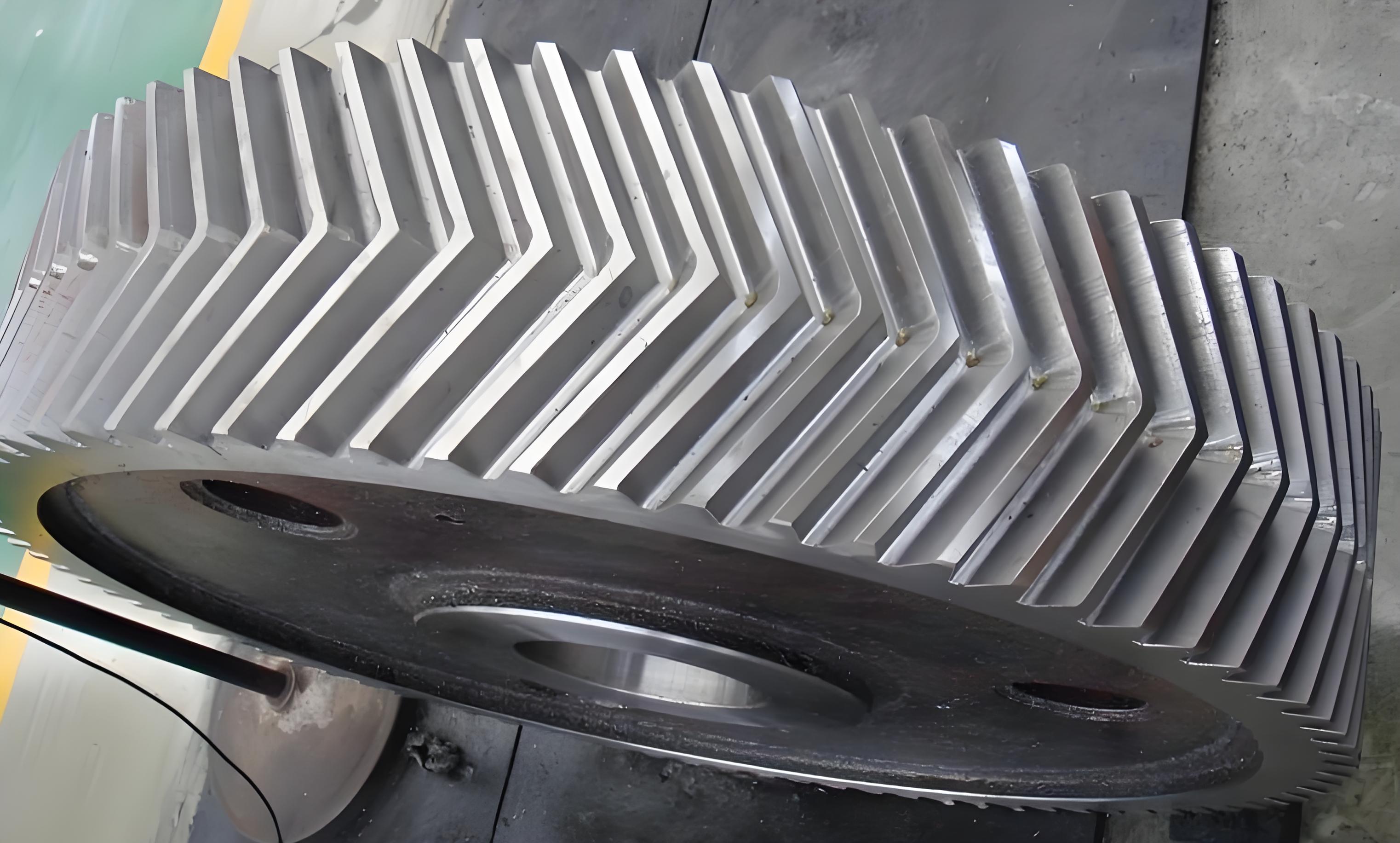Abstract
To investigate the bifurcation dynamics characteristics of star herringbone gear transmission systems, the research team established a pure torsional nonlinear dynamic model for the system using the lumped mass method. The nonlinear vibration differential equations of the system were solved using the Runge-Kutta method. Analysis techniques such as phase diagrams, Poincaré cross-sections, and bifurcation characteristics were utilized to study the influence of mesh damping ratios on system vibration responses and bifurcation characteristics under different rotational speeds. The results indicate that the system exhibits rich nonlinear dynamic behaviors at different rotational speeds. As the mesh damping ratio increases, the system transitions from a chaotic state to a period-doubling state and then to a single-period state through inverse bifurcation. Therefore, properly increasing the mesh damping ratio of the system while ensuring transmission efficiency can significantly weaken chaotic motion, reduce vibration responses, enhance system stability, and contribute to noise reduction and service life extension of the system.

1. Introduction
Gear devices are widely used in various fields such as heavy industrial machinery and small precision instruments. The vibrations and noise generated by gear systems under the coupling interference of various nonlinear factors greatly deteriorate the working environment. Therefore, to improve the operational stability and transmission noise of gear systems, it is essential to study and optimize their dynamic characteristics. Star herringbone gear transmission systems are often applied in equipment requiring high power density, large transmission ratios, and structural strength due to their advantages. To understand the vibration bifurcation behavior of star gear systems and improve their response characteristics, many scholars have conducted research and optimization on their dynamic behaviors and vibration characteristics.
Table 1: Overview of Related Research
| Author | Research Focus | Methodology | Key Findings |
|---|---|---|---|
| Kahraman | Modal and vibration shapes of single-stage planetary gear systems | Pure torsional dynamic equations, numerical solutions | Modal and vibration shapes identified |
| Qiu Xinghui et al. | Dynamics of planetary gear systems in wind turbines | Literature review, optimization design, and future directions | Comprehensive overview provided |
| Lin He et al. | Time-varying mesh stiffness and torsional nonlinear dynamics of herringbone planetary gears | Dynamic trapezoidal diagram, analysis of quasi-periodic vibration characteristics | Quasi-periodic vibration characteristics analyzed |
| Li Tongjie et al. | Dynamic characteristics of spur planetary gear systems | Pure torsional dynamic model, analysis of excitation frequency and backlash | Influence of excitation frequency and backlash analyzed |
| Wei et al. | Dynamic modeling of herringbone planetary gear systems | Virtual equivalent shaft unit method | Dynamic model constructed |
| Mo et al. | Dynamics of herringbone planetary gear systems | Lumped parameter theory and Lagrange method | Dynamic model established |
2. System Nonlinear Dynamic Model
The research team employed the lumped mass method to establish a nonlinear dynamic model for the star herringbone gear transmission system. The end-face dynamic model of the system. The power of the system is mainly input through the sun gear and distributed to the planetary gears, which then converge into the ring gear for output.
In the model, all gears are herringbone gears, considered as composed of two identical but oppositely rotated helical gears connected by an Euler beam element. Mass nodes s1, s2 represent the left and right helical gears of the sun gear; pi1, pi2 represent the left and right helical gears of the planetary gear i (i=1, 2, 3); r1, r2 represent the left and right helical gears of the ring gear.
Table 2: Parameters and Variables in the Dynamic Model
| Symbol | Description |
|---|---|
| kspi, krpi (i=1, 2, 3) | Mesh stiffness between sun gear and planetary gears, planetary gears and ring gear |
| cspi, crpi (i=1, 2, 3) | Mesh damping between sun gear and planetary gears, planetary gears and ring gear |
| espi, erpi (i=1, 2, 3) | Comprehensive transmission errors between sun gear and planetary gears, planetary gears and ring gear |
| θs, θpi (i=1, 2, 3), θr | Rotational vibration displacements of sun gear, planetary gears, and ring gear |
| β1, β2 | Helix angles of the helical gears (β2 = -β1) |
| b | Backlash |
| Ts, Tr | Input torque and output torque |
3. Analysis of Bifurcation Characteristics
The research team used the Runge-Kutta method to numerically solve the dynamic differential equations and studied the bifurcation evolution process of the system through phase diagrams, Poincaré cross-sections, and bifurcation diagrams under different rotational speeds. The influence of mesh damping ratios on system vibration responses and bifurcation characteristics under different rotational speeds was analyzed.
Conclusion
The study reveals that the star herringbone gear transmission system exhibits rich nonlinear dynamic behaviors at different rotational speeds. By increasing the mesh damping ratio appropriately while ensuring transmission efficiency, chaotic motion can be significantly weakened, vibration responses reduced, and system stability enhanced. This contributes to noise reduction and service life extension of the system, highlighting the importance of considering nonlinear dynamics in gear system design and optimization.
